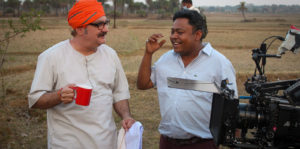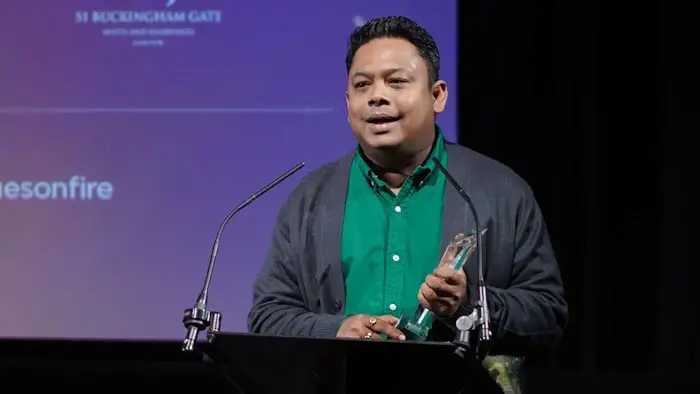
To start with, I pooled my savings and directed a 17-minute short film. This short, apart from being a tremendous learning experience of the actual directing process, made me aware of my strengths and weaknesses as a director. Later on, I was chosen for Berlinale Talents 2015, and in 2019 I got selected for the Kyoto Filmmakers Lab, Japan as a director. Here, I got a chance to direct a micro samurai short film with an international crew. All these experiences gave me the much-needed confidence to plunge into what I have been waiting to do all these years – to direct my first feature film.
Coincidently, I came across this compelling story of a charismatic 8-year-old, innocently challenging the existing institution of faith while struggling to make sense of the society around him, and I was in awe of how delicately and with simplicity it dealt with such a complex issue. I knew I had to make this film. And this is how I took up ‘Bhagwan Bharose’ as my directorial debut.
For a drama steeped in reality, the film is gorgeously lensed. The small village at the heart of everything is beautiful. Were there any hurdles to shooting in the location?
The film is shot in real locations in multiple villages within a 50km radius of a town called Deogarh in the state of Jharkhand, India. It is interesting to note that the water well that we see in the film was not the one chosen by us initially. We had selected another well for our shoot, but when the crew reached that location, we were devastated to find that the well was demolished and did not exist then. We had 24 hours to find a completely new location to shoot the opening scene for our film.

“…make a couple of short films before venturing into your feature.”
For the location of the school, I was not very satisfied with the options we had, they were nowhere near to what I had visualized. One day, on our way to another location, I saw a small school-type building, and out of curiosity, we stopped to check it out. One may call it a mere coincidence or cosmic guidance, but we found an exact quote from our latest script revision painted on one of the walls of the school. And that is the final school location that you would see in the film.
The cultural fair and market locations were hand-built sets guided by our art direction team. Everything else that we see was real locations. As we were shooting in a rural town, the residents were not used to shootings. However, they were kind, generous and supported us wholeheartedly in their excitement.
Of course, a whole lot of credit also goes to our Line producer Pritam Chaudhury, Cinematographer Surjodeep Ghosh, Production Designer Rishabh Kushwaha, and Costume Designer Shilpi Agarwal, who did a fantastic job in making the world I visualized into a reality.
What is a lesson you learned as a director with Bhagwan Bharose that you’d pass on to another first-time director?
Not everyone gets the opportunity to create Citizen Kane on their first attempt. So, it’s fine if it is taking a little longer than usual for your dream first feature to happen. Directing is all about having the correct real-life experiences and the ability to take decisions. When I look back, I feel that the more you have seen life, the more you have lived life – the better director you could become.
Also, make a couple of short films before venturing into your feature. Use these shorts to identify your strengths and your areas of improvement. Hire a deserving and talented crew that not only complements your vision but also helps you achieve a much better result.
And most importantly, have patience. In spite of being a producer of multiple critically acclaimed, award-winning films, I have failed multiple times to put together my directorial debut. Finally, almost after 20 years of wanting to become a filmmaker, Bhagwan Bharose happened. You need a lot of divine intervention to pull off a film independently, and I got that in abundance this time. A long cherished dream made possible by a passionate and hardworking group of people, the best cast and crew one can have.
